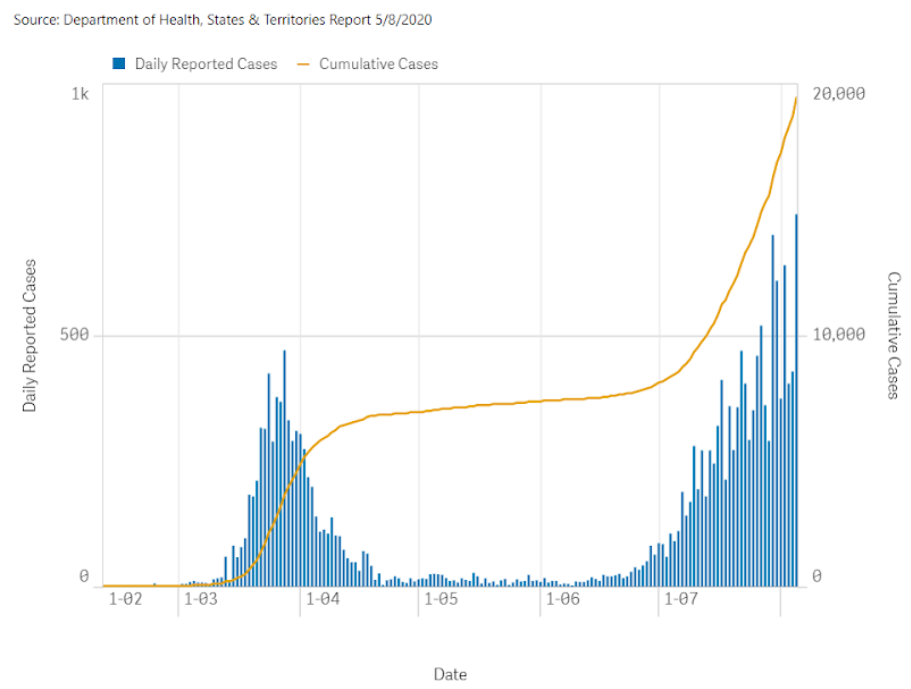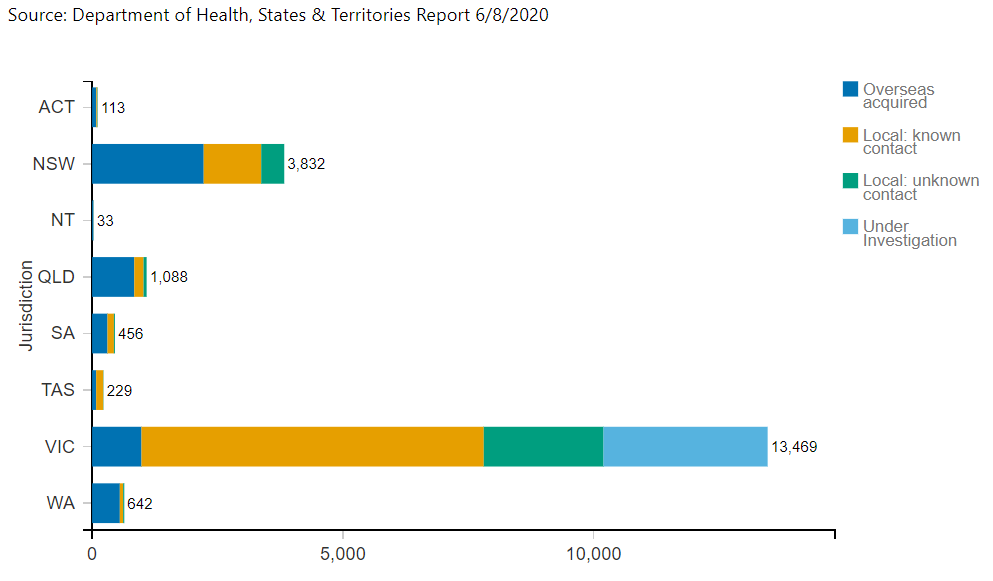COVID-19 Pandemic - Oceania

BY: SOHAM SHASHIKUMAR
The following article is a brief description of the current predicament faced in the Asian region of the world with regards to the current COVID-19 Pandemic. All of the sources utilized to formulate this brief analysis have been referenced towards the end of the page.
Since COVID-19 was declared a pandemic by the WHO on March 11, 2020, all the countries of the world had to put in place previously determined countermeasures to pandemics, as well as adapt to anything new. As expected, each continent faced different struggles and different degrees of success, both of which were dependent on financial resources, government action, and the reception to the change in lifestyle by the population. Two countries that saw success in dealing with COVID-19 are Australia and New Zealand. With a population nearing 24 million, Australia currently has 19,444 confirmed COVID-19 cases, which is roughly 0.08% of the population. Out of these 19,444 cases, 247 have been deaths, which is about a 1.3% death rate. Although those are still 247 lives lost, this death rate is far better than the 6% of the U.S.A, or the 13.5% of Italy. New Zealand has been even more successful; its population of 4.9 million only has 1,569 confirmed cases (0.03% infection rate), of which only 22 were deaths (1.4% death rate). Although neither country is a global superpower like the U.S.A, their success in dealing with COVID-19 can be largely attributed to strict social restrictions, cooperation from the citizens, and proper governmental handling of the situation.
Let’s first examine New Zealand’s response to COVID-19. New Zealand began introducing infectious disease protocol before COVID-19 was even declared a pandemic, back in January 3, 2020. These measures were originally based around the possibility of an influenza pandemic, but given the novel nature of COVID-19, the New Zealand government modified its protocol. The lockdown procedures were fairly standard, but the power of the lockdown came in the form of the support of the lockdown. For example, all non-essential businesses were shut down, social distancing was enforced, citizens were recommended to not leave their houses and to wear a mask if they did leave for essential supplies, and the borders were closed. While this decision from the government did not go completely uncontested within New Zealand, it succeeded because of the government’s stricter enforcement of it coupled with the general support for the decision pushed COVID-19 cases down. While the cases continued to rise shortly moving into early April, they soon stabilized, and eventually New Zealand stopped gaining cases. After about 2 consecutive weeks of having no new cases, New Zealand ended its lockdown: social distancing was no longer required and gatherings could be conducted just as previously. In addition, most businesses have started opening again, and the economy is picking up. However, the country still remains on guard of the unresolved state of COVID-19 in other countries, and is keeping its borders closed. In addition, the government has stated they are remaining on guard of any epidemiological developments with COVID-19, both in the country and internationally. All in all, New Zealand has received global praise for its handling of COVID-19, as one of the few countries to have ‘wiped it out’.
As mentioned earlier, Australia is another country that has been commended for its response to the COVID-19 pandemic. While the focus of the COVID-19 response in New Zealand was speed, Australia seemed to have focused on governmental cooperation. Australia, being divided up into national, state, and local governments, each with its own authority, had to coordinate COVID-19 countermeasures with each level. While difficult, the government was able to make this work, and coordinated new public health efforts with each level of government. Australia’s national cabinet consistently held meetings to discuss new data and scientific evidence regarding COVID-19 in order to decide and adjust protocol. In terms of the guidelines themselves, Australia was fairly similar to the proposed guidelines of other countries. In short, they ordered the closing of any non-essential businesses, mandated social distancing, had citizens wear masks if leaving their house, and encouraged citizens to isolate themselves. The country has also closed its borders, which still remain closed. The progression of infection rates in Australia experienced a similar pattern to that in New Zealand, where the cases continued to rise shortly after lockdown, but steadily decreased. However, in recent months, the cases have begun to spike once again, to far higher numbers than previously seen. This is believed to be attributed to previously overseas Australians returning to the country, increasing both the current infected count as well as the possibility for transmission. At the moment of writing this article, the cases are continuing to rise, especially in states such as Victoria. It is yet to be seen what plans or countermeasures the Australian government plans on taking to combat these new cases.
Overall, Oceania has had a well executed response to the COVID-19 pandemic, and will likely continue to respond well in the face of struggle, such as the now increasing cases in Australia. The question of other Pacific islands comes up in this discussion, but most of them have no cases at the moment. In fact, New Zealand is assisting their Pacific neighbors in combating any sort of outbreak. While COVID-19 is yet to come to an end around the world, Oceania has already taken steps to bring it to an end locally.
Image 1 Source: Department of Health, States, & Territories Report 5/8/2020
Image 2 Source: Department of Health, States, & Territories Report 6/8/2020


References
- Australian Government Department of Health. (2020, August 03). Coronavirus (COVID-19) current situation and case numbers. Retrieved August 07, 2020, from https://www.health.gov.au/news/health-alerts/novel-coronavirus-2019-ncov-health-alert/coronavirus-covid-19-current-situation-and-case-numbers
- Boxall, A. (2020, July 16). What the US Could Learn from Australia’s COVID-19 Response. Retrieved August 07, 2020, from https://www.milbank.org/2020/04/what-the-us-could-learn-from-australias-covid-19-response/
- New Zealand takes early and hard action to tackle COVID-19. (2020, July 15). Retrieved August 07, 2020, from https://www.who.int/westernpacific/news/feature-stories/detail/new-zealand-takes-early-and-hard-action-to-tackle-covid-19
